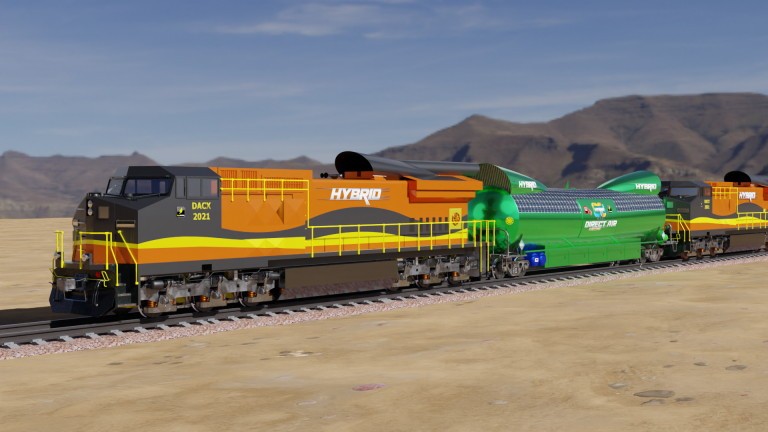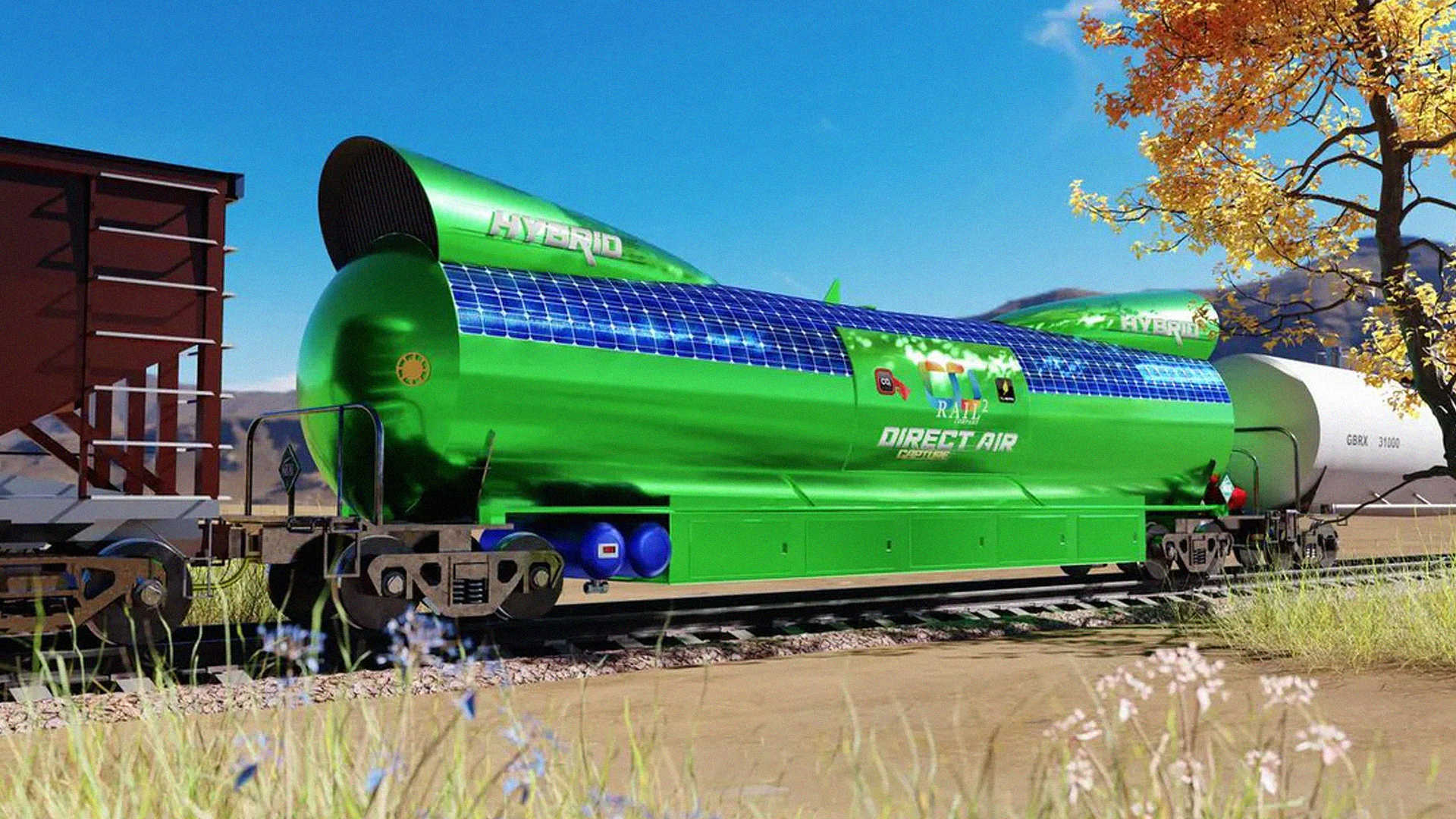Trains of the future could scrub the air of carbon dioxide rather than pumping it out of their smokestacks. The new concept, outlined in science journal Joule, could reportedly capture emissions for less than $50 USD per ton.
As it stands, the only thing we’re on track for is dangerous levels of climate warming.
A recent consensus among environmental scientists, is that transitioning away from pollutant industry practices will not be enough meet the terms of the Paris Accord. Using green tech to sequester existing emissions is now deemed essential too – 10 gigatons annually by 2050, to be precise.
That’s easier said than done, however. Developing effective and affordable carbon capture technology is one thing, but there’s also sizable land and energy footprints to deal with.
The energy system transformation needed to achieve the US long-term strategy: https://t.co/YKf8XrHLUf pic.twitter.com/sphlaUNIXv
— Joule (@Joule_CP) July 28, 2022
A popular solution is to retrofit old buildings with smaller scale devices to create circular power systems. A Raddison hotel in the US, for instance, is converting carbon from its hot water tanks into potash, which is useful for making soaps and shampoos.
Ideally, in the coming years, we will also create portable ‘Direct Air Capture’ modules that can soak up greenhouse gases on the move. A research cohort from Canada, the US, and the UK recently unveiled an exciting concept for such a device in the energy journal Joule.
The entry outlines a mission to attach DAC devices directly to modified freight trains, so they’re removing CO2 from the air whilst rumbling along track lines.
Roughly the size of a regular train car, each unit is reportedly capable of drawing 6,000 tons of carbon from the atmosphere each year.






















